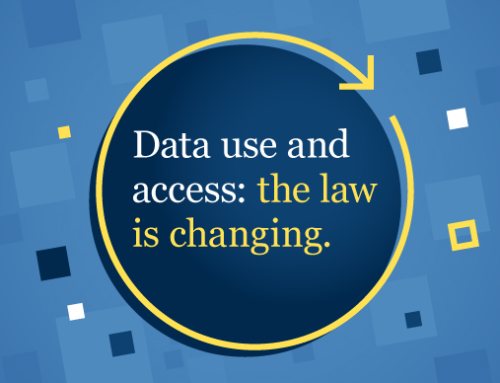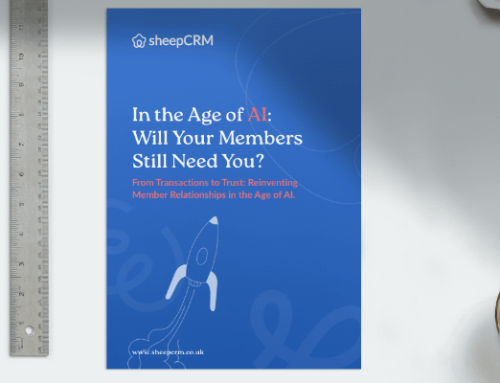‘Innovate, experiment, monitor and control’ is an often used mantra within GenAI. Everyone is testing AI concepts, learning through trial and error while looking for the competitive advantage. There often is not one solution, but an ecosystem of technology to unlock data and AI opportunities. Patience will also be a virtue as AI Governance models mature, as user acceptance of automation and knowledge aggregation improves and as GenBI risk or opportunity identification models get trusted.
Raconteur.net recently published an interesting IBM 2023 survey in The Times AI for Business supplement on the barriers many organisations face adopting AI across their company. We have taken example data from the report and benchmarked it against what membership bodies should be considering as recommendations in a quick comparison list. We think it will help define your position to help your journey.
Raconteur.net IBM Survey 2023 (as in The Times Newspaper AI for Business Supplement 23rd July 2024):
IBM Research Question: Barriers that hinder the successful adoption of AI among IT professionals at companies currently exploring or deploying AI.
1. IBM Research Answer
We have limited AI skills, expertise or knowledge
33% of respondents agree
Recommendation
Choose a solution with low/no code, easy to deploy at an enterprise or department level of control to start with. Remember AI aggregates data at scale so you may have silo applications that run specific AI tasks, such as Chatbots, but the power is new intelligence from all your data and documents locked away across the organisation.
2. IBM Research Answer
We have too much data complexity
25% of respondents agree
Recommendation
Start small with good data/documents and a defined use case to build confidence. Remember – if rubbish in, then rubbish out! AI can be used to help clean up data of course once you have started assessing initial outcomes but start in areas you are confident you have accessible information.
3. IBM Research Answer
We have ethical concerns
23% of respondents agree
Recommendation
Output results should be focused to your own data and documents first for you to review and edit results before releasing. You are the subject matter experts verifying the outputs. Be transparent and tell members if you are using sources outside of the membership body to generate new GenBI content. We like the content disclaimer; ‘Powered by our own GenBI service. Please use this advisory information at your own discretion. Ask if you need further help.’
4. IBM Research Answer
AI projects are too complex or difficult to integrate and scale
22% of respondents agree
Recommendation
User engagement increases with simplicity. Quick drag and drop tools for data and documents into a service, or email in documents for review, increases user engagement with prompts that use plain and simple language. Don’t try and ‘boil your data lake’ this year – just get started and try out simple concepts. Scale can be iterative from a strong foundation.
5. IBM Research Answer
The price is too high
21% of respondents agree
Recommendation: Price always depends on use case. Usually there is an AI token cost, a cloud hosting cost and a platform/service cost to consider but you don’t need to be in the FTSE 500 – SME’s are already benefiting from GenBI tools and have limited budgets.
6. IBM Research Answer
We have a lack of tools/platforms for developing AI models
21% of respondents agree
Recommendation: AI models operate based on algorithms such as machine learning, deep learning models, and rule-based learning. The machine learning algorithm activates a specific data processing mechanism that enables artificial intelligence to process data and learn from them. With the help of machine learning, AI models learn without being programmed to do so. However, it is easier to start at the prompt level – engage with systems and providers that allow you to write simple prompts that use a range of models to build confidence with the outputs.
7. IBM Research Answer
We do not have a holistic AI strategy in place
17% of respondents agree
Recommendation: Be prepared for a short-term strategy as AI is evolving – fast. We suggest focus on the data and desired outcomes then run multiple small test strategies first. The wider picture will surface with the opportunity. In parallel be mindful of your emerging AI Governance and start to articulate and document internally your guardrails – what compliance you expect from the technology, users and usage.
8. IBM Research Answer
We do not have the ability to properly govern our AI models
17% of respondents agree
Recommendation: Engage with a secure service that is controlled by user permissions, holds defined preset prompts, controlled process automation and an approval workflow to help set the guardrails to GenAI/GenBI outputs. See guardrail comment above.
9. IBM Research Answer
We do not have the use cases defined or the end user research needed to get started
17% of respondents agree
Recommendation: Start simply at a department level and ask what monthly reports could be automated, what research is regularly needed and build a local ‘team by team’ challenger business case. Remember AI is not just for Chatbots and marketing!
10. IBM Research Answer
We are locked to one vendor (AI and Cloud tied to one single vendor)
13% of respondents agree
Recommendation: We would always recommend a range of different tools from different providers – the data is yours, regardless of the changing applications generating new intelligence from it.
11. IBM Research Answer
Nothing is technically hindering successful AI adoption for my business
11% of respondents agree
Recommendation: Great we recommend ‘innovate, experiment, monitor and control’ always – let’s get started!
12. IBM Research Answer
None of the above
3% of respondents agree
Recommendation: Oh dear – we need to talk.
Referenced IBM 2023 survey information from: Raconteur.net AI for Business supplement distributed in The Times and published in association with techUK and Digital Leaders. For more information about IBM visit www.ibm.com/think
We are championing GenBI outputs from everyday business engagement or research documents and data as a simple start for most membership led organizations. Generative Business Intelligence (GenBI) is the interconnection of Generative AI with specific business data. It uses the power of organisational documents and data with research concepts to create new insights and analytics. It basically makes the output of GenAI useful. Librios sits in this space.
GenAI vs GenBI
In the rapidly evolving technological landscape, Generative Artificial Intelligence (GenAI) and Generative Business Intelligence (GenBI) have emerged as transformative tools. While both share the generative aspect, their applications, functionalities, and benefits to businesses differ.
Differences Between GenAI and GenBI
1. Core Functionality:
- GenAI: GenAI focuses on creating new content, such as text, images, music, and even code. It uses advanced machine learning models like GPT-4 to generate human-like text and creative outputs.
- GenBI: GenBI centres on generating business insights by analysing data patterns, predicting trends, and providing actionable intelligence. It utilises data analytics, statistical models, and business rules to transform data into meaningful information.
2. Use Cases:
- GenAI: Its applications include content creation, customer service chatbots, automated code generation, and creative industries like media and entertainment.
- GenBI: It is used for business forecasting, information and performance analysis, market trend prediction, risk assessment and strategic decision-making support.
3. Technology Stack:
- GenAI: Leverages neural networks, deep learning, and natural language processing (NLP) technologies.
- GenBI: Utilises data warehouses (databases), documents, business analytics tools, and visualisation software.
Librios is a secure generative business intelligence platform that turns complex data and documents into actionable insights.
Contact us for a demo or visit www.librios.com #GenBI #GenAI











Leave A Comment